The biting, icy wind was fierce and growing stronger by the minute. Gusts howled over the ridgeline we walked, slamming into us with a force great enough to drive me to my knees. I huddled in the snow and waited for the gust to pass, certain that if I stood up I would be knocked over immediately.
Up ahead, I saw two of the people in our hiking party adopting the opposite strategy: they stood on the edge of the ridge and leaned backward into the gusts, leaning far enough that they would normally have toppled over – but instead, the wind was strong enough to hold them in position, laughing figures defying the laws of physics.
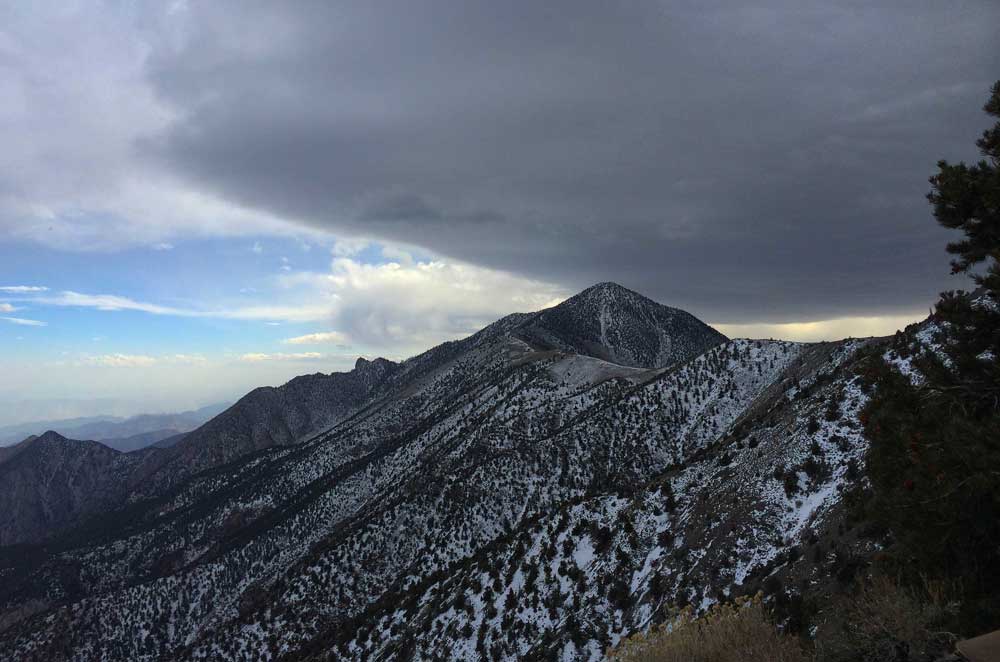
Snow began to fall, and when I looked back over my shoulder to see the peak we had just summited, I realized it had been engulfed by the storm: dark grey clouds falling like a shroud over the mountain top. It would not be long until they were upon us as well.
The mountain was Telescope Peak, elevation 11,049 feet. The trail was 14 miles round-trip, with an elevation gain of roughly 3000 feet. The month was November, the temperature ranging from single-digits to 30 degrees (without wind chill).
The location? Death Valley National Park.
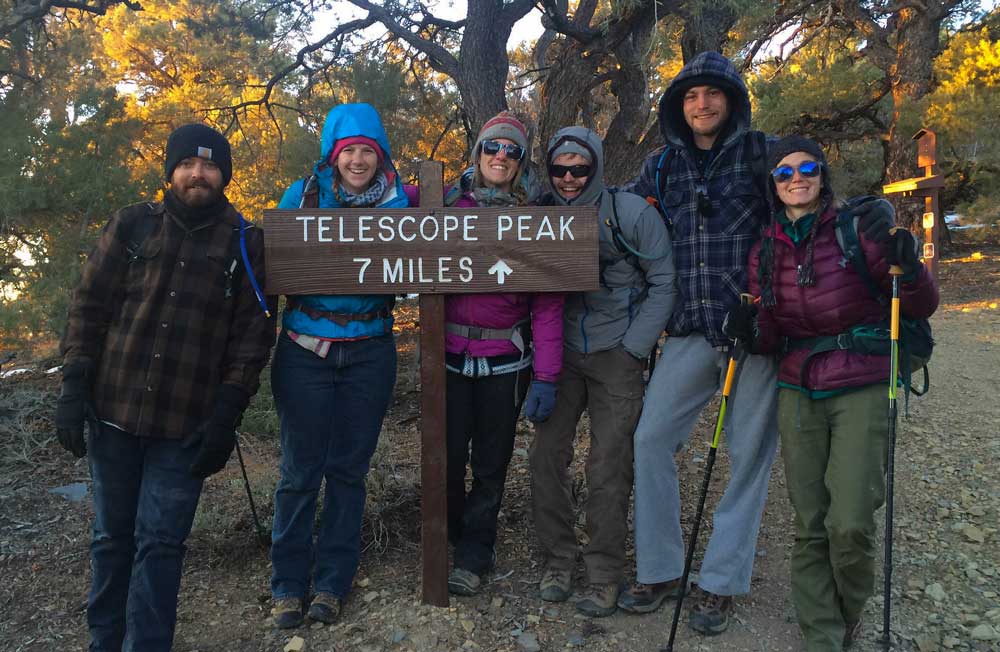 When people picture Death Valley, they picture ripples of heat rising from cracked brown earth; people frying eggs on the sidewalk; animal skulls surrounded by endless, lifeless expanses of brutal heat. But once you visit Death Valley, you find that it is so much more than that.
When people picture Death Valley, they picture ripples of heat rising from cracked brown earth; people frying eggs on the sidewalk; animal skulls surrounded by endless, lifeless expanses of brutal heat. But once you visit Death Valley, you find that it is so much more than that.
Death Valley National Park covers a north-to-south length of 156 miles, a space that includes an incredible diversity of ecosystems and organisms. It’s true that Death Valley is considered the hottest place on Earth, holding the record for highest recorded air temperature (134 degrees Fahrenheit). The lowest point of Death Valley is also the lowest point in North America: Badwater Basin, sitting at an elevation of 282 feet below sea level. The highest point is Telescope Peak, part of the Panamint mountain range.
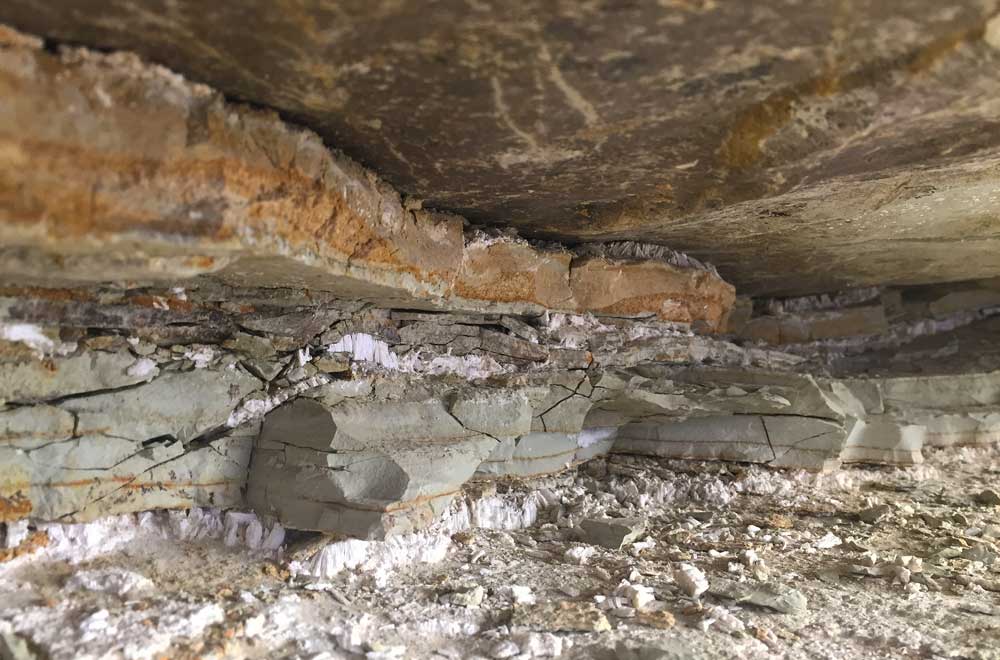 Death Valley as we know it today was created by millennia of tectonic and volcanic activity, the plates below the earth’s crust shifting to create the mountains and valleys that texturize the landscape. Centuries ago, the parched valleys were basins holding great lakes that have long since evaporated as the temperature increased, leaving behind the surreal formations we see today. Although the average visitor may not see much in the way of life here, it doesn’t mean it can’t be found. The resilient desert pupfish can be found thriving in the salty small streams that run through parts of the valley; desert bighorn sheep pick their way along the slopes of mountains; and in years that bring a higher-than-average amount of rainfall, the brown desert comes alive with fields of yellow and purple wildflowers stretching for miles, an incredible event known as a super bloom (experienced Spring 2016).
Death Valley as we know it today was created by millennia of tectonic and volcanic activity, the plates below the earth’s crust shifting to create the mountains and valleys that texturize the landscape. Centuries ago, the parched valleys were basins holding great lakes that have long since evaporated as the temperature increased, leaving behind the surreal formations we see today. Although the average visitor may not see much in the way of life here, it doesn’t mean it can’t be found. The resilient desert pupfish can be found thriving in the salty small streams that run through parts of the valley; desert bighorn sheep pick their way along the slopes of mountains; and in years that bring a higher-than-average amount of rainfall, the brown desert comes alive with fields of yellow and purple wildflowers stretching for miles, an incredible event known as a super bloom (experienced Spring 2016).
 It is a humbling and awe-inspiring place to visit, and one I have been lucky enough to explore on three separate occasions. On this third visit, we decided it was time to challenge ourselves and see some of the lesser-explored regions of the park – and so we came to Telescope Peak. To get a truly remarkable perspective of Death Valley’s harsh landscape, this hike cannot be beaten.
It is a humbling and awe-inspiring place to visit, and one I have been lucky enough to explore on three separate occasions. On this third visit, we decided it was time to challenge ourselves and see some of the lesser-explored regions of the park – and so we came to Telescope Peak. To get a truly remarkable perspective of Death Valley’s harsh landscape, this hike cannot be beaten.
The hike begins from Mahogany Flat campground, at an elevation of 8,133 feet. The drive to the trailhead is long, taking you to the outer edges of the giant park, the road eventually turning to smooth gravel and in the last two miles, rough and rocky terrain. As we drove slowly upward in the low light that comes just before sunrise, we had the opportunity to watch the scenery change from a desolate desert to an arid forest populated by pinyon pine and juniper trees. We began to see patches of snow on the ground, a sign that we were no longer in the Death Valley we thought we knew, and as soon as we stepped out of the car the stinging wind cut through our many layers of clothing to steal our breath away. We had arrived!
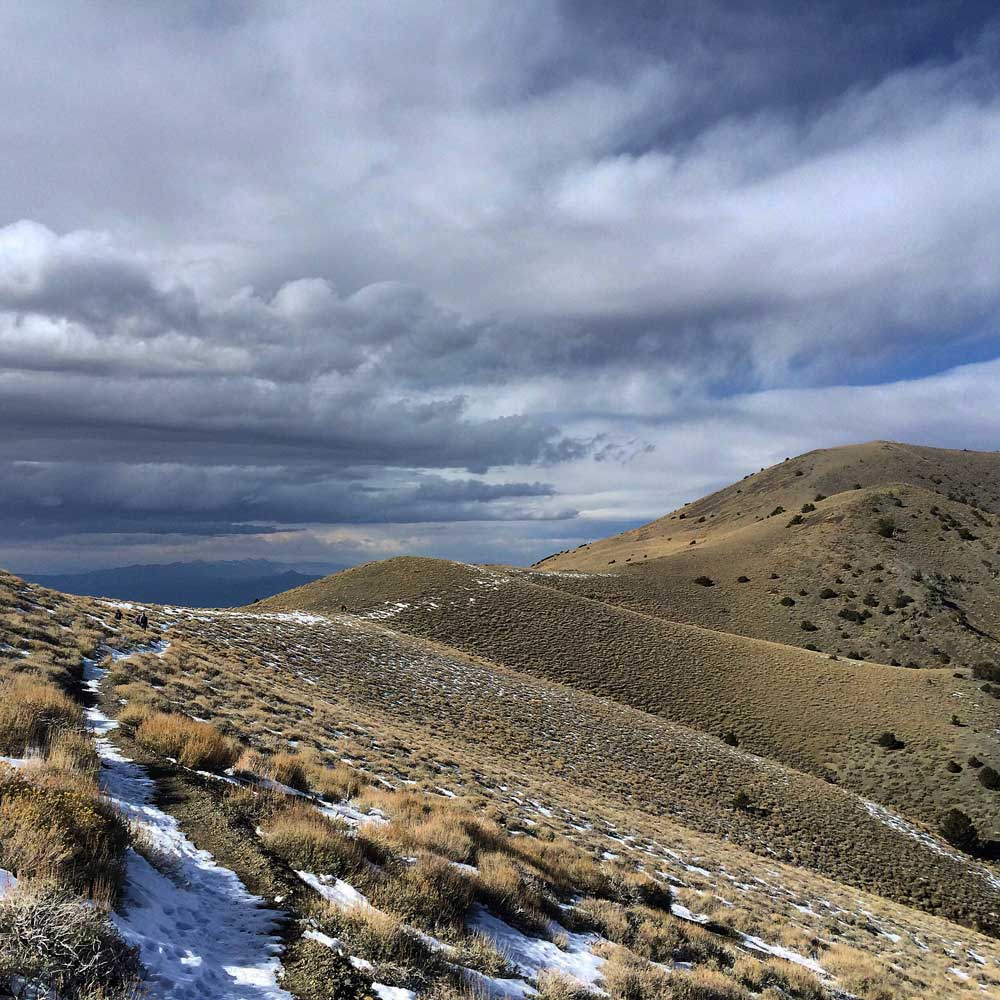 The trail is narrow and alternates between areas of gentle incline and steep ascent, often hugging the mountainside closely, a sharp drop on one side. It begins in an area still thicketed with pinyon pine and juniper trees, but after a couple of miles, we climbed above the tree line completely. At that point, we got our first good look at the grand Telescope Peak in the distance, rising above everything around it.
The trail is narrow and alternates between areas of gentle incline and steep ascent, often hugging the mountainside closely, a sharp drop on one side. It begins in an area still thicketed with pinyon pine and juniper trees, but after a couple of miles, we climbed above the tree line completely. At that point, we got our first good look at the grand Telescope Peak in the distance, rising above everything around it.
The trail continued along the mountainside for another mile or so, eventually flattening out into a small saddle called Arcane Meadows, vegetated only by some shrubs and grasses and affording a wider view of the surrounding mountain ranges than we had previously been able to see. Arcane Meadows did not last long; soon we were picking our way along steep mountain slopes again, this time in the shadowed part of the range. We did this hike in the middle of November, the very end of the window of time most people can attempt it without technical snow gear, and it was already far from dry. The higher we climbed, the more snow appeared, often slick and icy and requiring slow and intentional movements. The trail beyond Arcane Meadows was covered completely by packed snow.
As we approached the final switchbacks that would take us to the summit, we came upon one of the things I was most excited for, and one of the highlights of this hike: the unique and rare Bristlecone pine tree. Bristlecone pines are some of the oldest living organisms on planet earth (the oldest is 5,065 years old, its location kept secret to protect it from damage by tourists), and are only found in rare groves, typically at elevations above 10,000 feet. Many of the gnarled, ancient trees paved our way from that point all the way to the summit of Telescope Peak, monuments to resilience, and after reading about them for so long, I was entirely too excited to see them in real life!
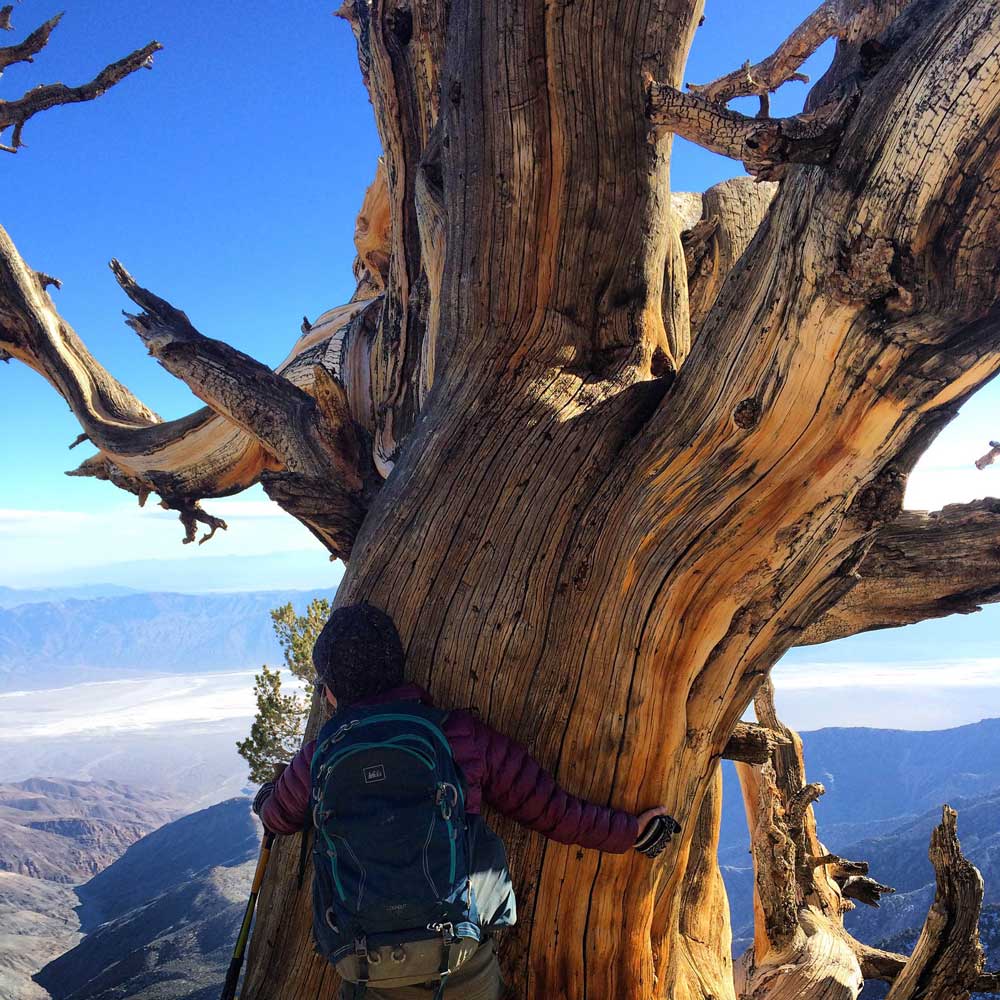 The final icy switchbacks climbed sharply upward to the trail’s conclusion. All that remained was crossing a short ridge to the rocky outcropping atop the small and exposed summit. When we finally arrived, we were awarded with a breathtaking, 360-degree view of the surrounding valleys and mountain ranges, stretching outward for miles.
The final icy switchbacks climbed sharply upward to the trail’s conclusion. All that remained was crossing a short ridge to the rocky outcropping atop the small and exposed summit. When we finally arrived, we were awarded with a breathtaking, 360-degree view of the surrounding valleys and mountain ranges, stretching outward for miles.
When we looked down, we could see the distant white salt deposits of Badwater Basin 11,331 feet below us, and the rugged topography of the rest of Death Valley was entirely exposed. In the distance, we could see the ridges of the Inyo and Sierra Nevada mountain ranges. Looking south, the day was sunny and clear, but looking to the northeast, we could see the storm moving in and we could feel the wind already starting to pick up. The temperature was barely in the double digits with wind chill – a sharp contrast to the 65-70 degree temperatures everyone down in Badwater was experiencing (already considered a cool day for this area’s standards). In warmer months, the temperature, even at the summit, can be 80 degrees.
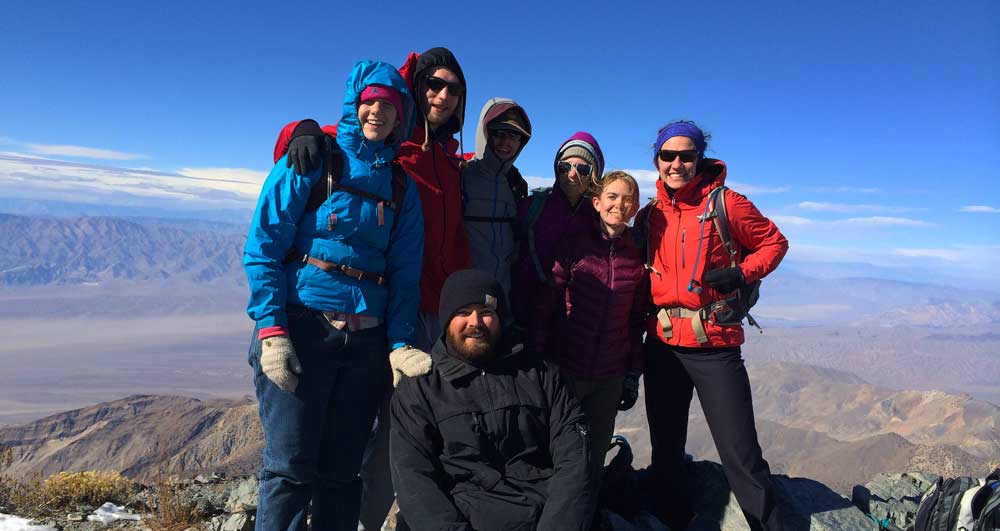 We rested for a while and enjoyed the rewarding views the summit offered until the wind made it clear it was time for us to go. We had descended only a couple of miles when the storm really hit, and we hiked out as quickly as we could – crossing those last five miles of icy, narrow terrain without stopping, feeling the power of nature at our backs as winter arrived suddenly to that lonely part of Death Valley. The snow level dropped at the same rate we did, snow flurries appearing and disappearing, fog slowly coming to obscure our visibility until we finally reached our cars and without hesitation climbed inside, cranked the heat, and drove away, leaving Telescope Peak to weather another storm in solitude.
We rested for a while and enjoyed the rewarding views the summit offered until the wind made it clear it was time for us to go. We had descended only a couple of miles when the storm really hit, and we hiked out as quickly as we could – crossing those last five miles of icy, narrow terrain without stopping, feeling the power of nature at our backs as winter arrived suddenly to that lonely part of Death Valley. The snow level dropped at the same rate we did, snow flurries appearing and disappearing, fog slowly coming to obscure our visibility until we finally reached our cars and without hesitation climbed inside, cranked the heat, and drove away, leaving Telescope Peak to weather another storm in solitude.
I’ve never felt winds as strong as the ones that chased us down the mountain that day, and when we checked the weather later, we found out that a foot of snow had fallen on the summit since we stood upon it 24 hours earlier, effectively closing the trail to casual hikers for the rest of the winter. The trail had been empty that day, making us some of the last to make that climb for the year.
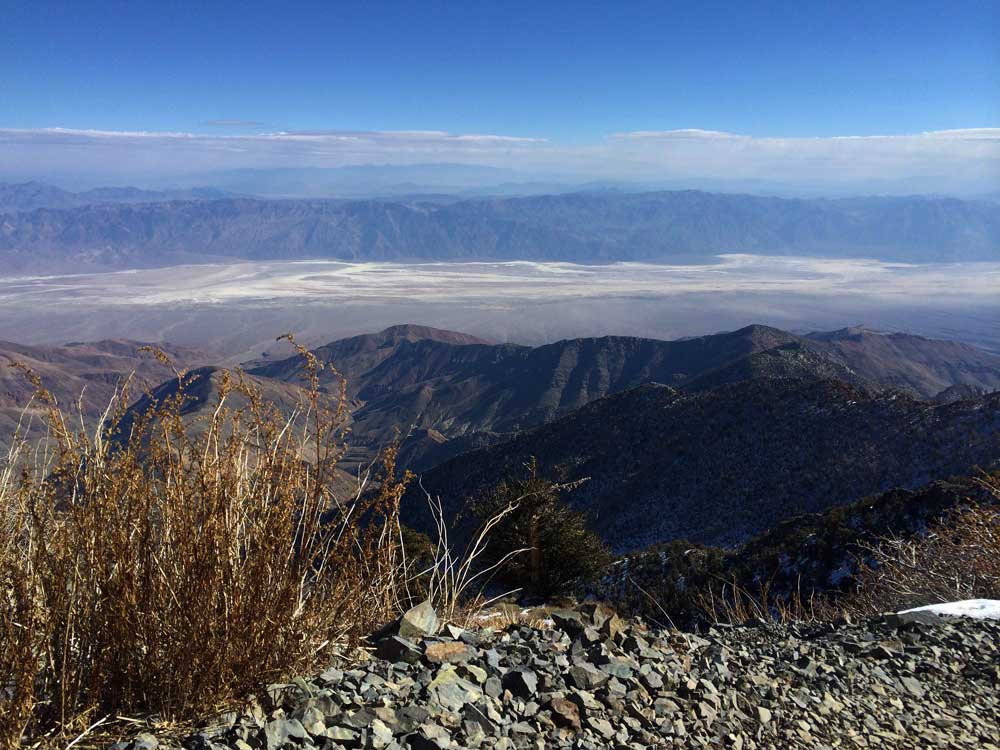 To truly experience all that Death Valley can offer, go to the extremes: stand in Badwater Basin and feel the heat, and then climb to the highest point and look down upon where you just were. If you don’t feel like battling winter storms, aim to do this hike in the milder months of June to October when the trail will be dry and the temperatures still comfortably on the warmer side. It is strenuous and long, but it offers some of the most remarkable views and a perspective few hikes can provide. You will see desert and forest, life and desolation. This place isn’t a wasteland; it’s a monument to the power of geology, time, and the resilience of the few special organisms that are capable of calling it home.
To truly experience all that Death Valley can offer, go to the extremes: stand in Badwater Basin and feel the heat, and then climb to the highest point and look down upon where you just were. If you don’t feel like battling winter storms, aim to do this hike in the milder months of June to October when the trail will be dry and the temperatures still comfortably on the warmer side. It is strenuous and long, but it offers some of the most remarkable views and a perspective few hikes can provide. You will see desert and forest, life and desolation. This place isn’t a wasteland; it’s a monument to the power of geology, time, and the resilience of the few special organisms that are capable of calling it home.
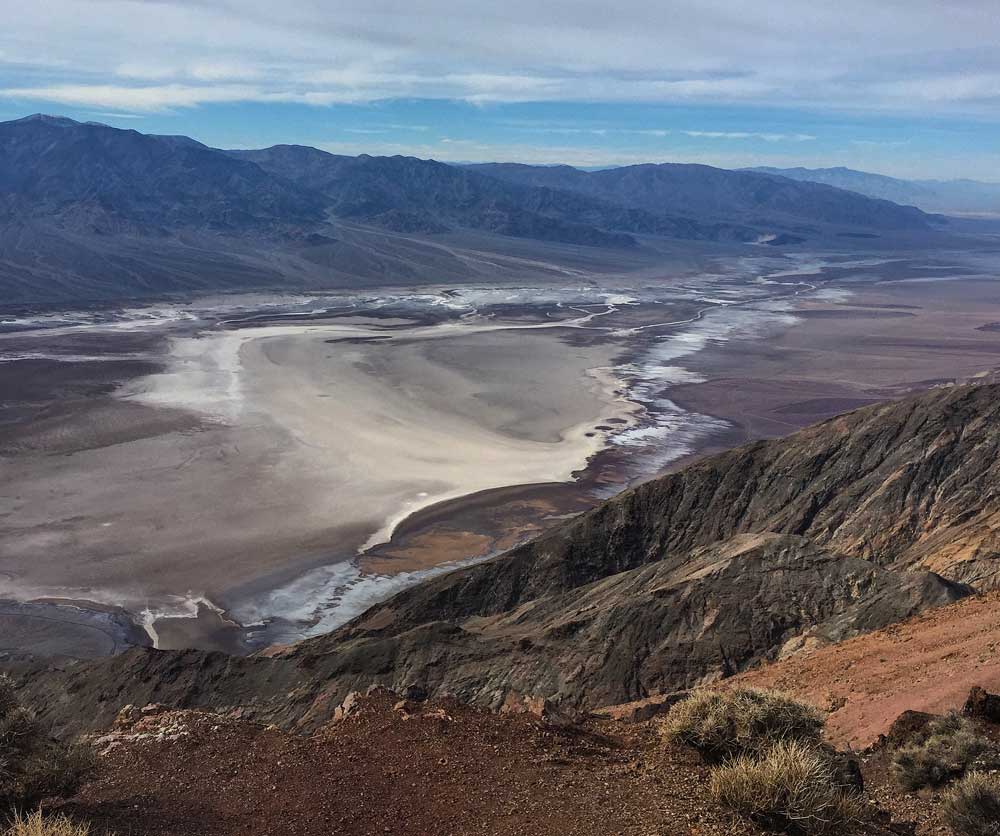 At High Trails Outdoor Science School, we literally force our instructors to write about elementary outdoor education, teaching outside, learning outside, our dirty classroom (the forest…gosh), environmental science, outdoor science, and all other tree hugging student and kid loving things that keep us engaged, passionate, driven, loving our job, digging our life, and spreading the word to anyone whose attention we can hold for long enough to actually make it through reading this entire sentence. Whew…. www.dirtyclassroom.com
At High Trails Outdoor Science School, we literally force our instructors to write about elementary outdoor education, teaching outside, learning outside, our dirty classroom (the forest…gosh), environmental science, outdoor science, and all other tree hugging student and kid loving things that keep us engaged, passionate, driven, loving our job, digging our life, and spreading the word to anyone whose attention we can hold for long enough to actually make it through reading this entire sentence. Whew…. www.dirtyclassroom.com

Comments are closed.